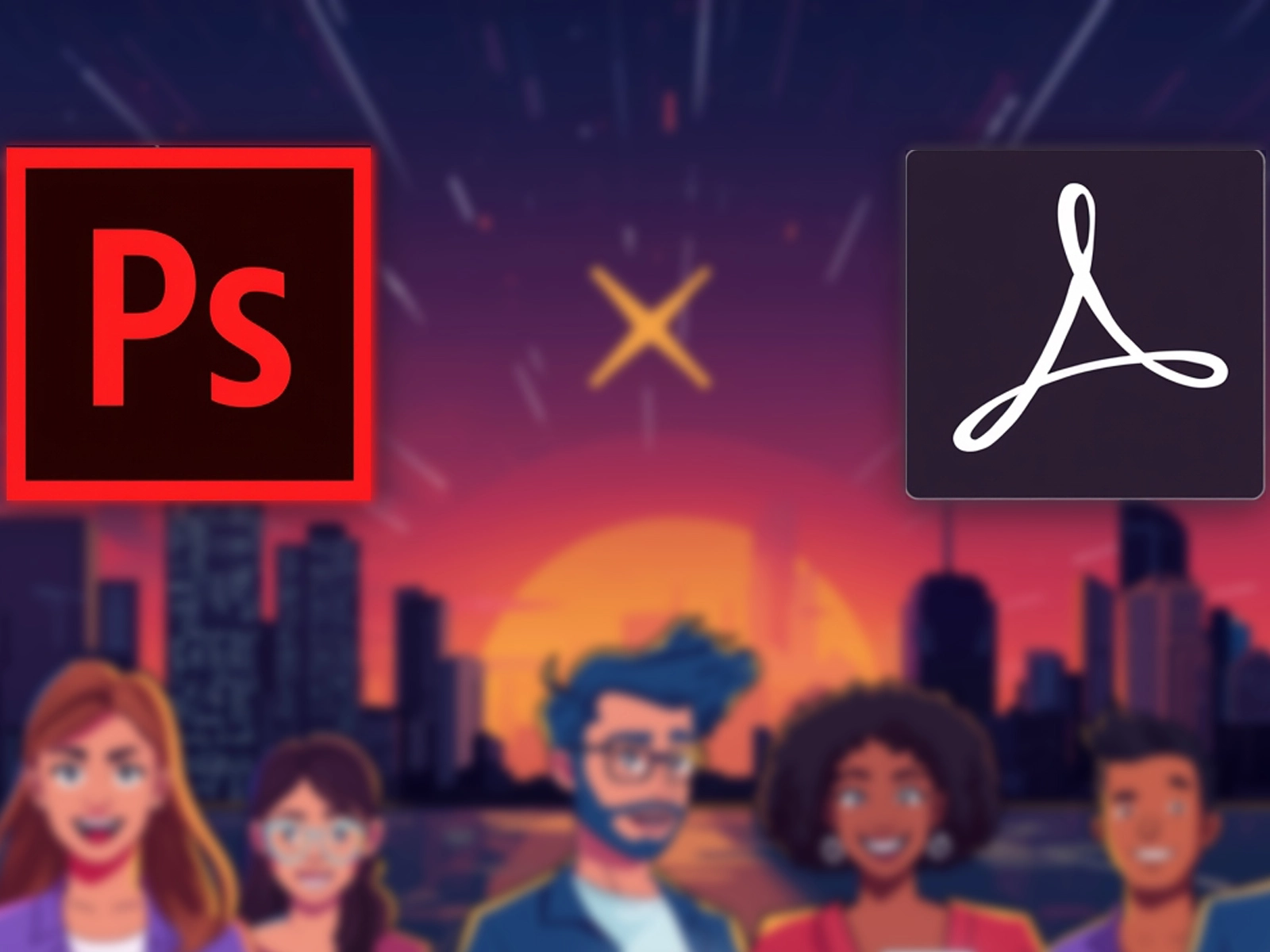
How conversational AI is changing the economics of paid search

How duplicate content reduces brand visibility in AI Search

Adobe announces integration of Photoshop, Express, and Acrobat features into ChatGPT

7 minutes
Your manager has just forwarded another LinkedIn post with a bold statement: “AI killed SEO overnight.” The client is worried that ChatGPT is allegedly siphoning their traffic, and you’re wondering whether it’s time to rethink traditional search engine optimization approaches.
However, the numbers tell a different story:
Traffic from AI-powered search platforms accounts for less than 1% of total traffic for most websites.
Meanwhile, Google processes around 14 billion search queries daily, whereas ChatGPT handles only about 2.5 billion prompts. And as we know, a prompt doesn’t always equal a real search, so the actual percentage is even smaller.
The real story isn’t about AI replacing traditional SEO—it’s about how Google organic search continues to deliver the overwhelming majority of traffic, leads, and revenue for businesses.
While everyone is chasing “AI hacks” and panicking over algorithm updates, the fundamental principles of SEO remain the most reliable investment for business results.
Read more about integrating GEO into modern SEO.
The key task is maintaining the right balance: staying informed about current AI trends and opportunities while allocating the majority of resources and investments to strategies that already produce tangible business outcomes today. This means focusing on proven methods, such as optimizing content for Google, improving technical site structure, and enhancing user experience, while carefully monitoring AI’s impact and gradually integrating it into marketing processes without diverting resources from the channels that actually generate traffic, leads, and revenue.
This approach allows businesses to remain competitive amid AI development while maintaining the effectiveness of tested SEO strategies.
Read more about Google’s SEO tips for better rankings.
AI search exists, but its impact on most businesses is far less dramatic than headlines suggesting the “end of SEO” imply.
Numbers don’t support the panic
SEO consultant Glenn Gabe analyzed data to highlight the gap between expectations and reality.
When he asked a marketer how much traffic AI search platforms (ChatGPT, Perplexity, Gemini) currently generate, the answer was: “30–40%.”
In reality, it’s less than 1%, and for many sites, even below 0.5%.
This aligns with what agency clients observe: AI traffic represents only a tiny fraction of overall visits.
Google’s AI Overviews, as of September 8, appeared in over 50% of search results and influenced click-through rates (CTR).
Blogger Angie Drake noted in a recent Q&A that her CTR decreased after AI Overviews were launched, even with increased impressions. Google Search Director Danny Sullivan acknowledged, “There will be some challenges” as Google tries to balance direct answers with support for the open web.
However, these changes occur within Google’s ecosystem—not a mass migration of users to third-party AI platforms.
Organic results on Google, even with minor reductions due to AI summaries, still deliver the majority of clicks and conversions.
AI search impact can vary by industry, though comprehensive data is still limited:
Key takeaway: even if ChatGPT, Perplexity, or Claude have different adoption levels across niches, traffic from these platforms remains minimal compared to Google.
Learn more about how to boost local SEO with 4 AI tools.
Discussions about AI in SEO have drawn attention to new user behaviors but also created pressure for drastic strategy changes that currently lack business justification.
Organic search grew 20% from 2023 to 2024.
Google algorithms still rely on key factors: content quality, backlinks, and behavioral signals.
Companies that maintain strong SEO fundamentals while monitoring AI developments continue to grow in organic traffic and conversions.
The gap between sensational headlines and actual business results is clear: leads and revenue still predominantly come from traditional search.
Some marketers are already restructuring strategies around AI tools without understanding their actual business impact. Yes, AI search will likely grow, but radical changes when the traffic source is under 1% only divert resources from channels that genuinely deliver results.
The issue isn’t that AI optimization is wrong—it’s that the scale of investment doesn’t match current capabilities.
Every hour spent “optimizing for AI traffic” could be better used improving conversion rates, making technical updates, or creating content that drives clicks from Google today.
The idea of “gaming” AI citations may sound appealing, but in practice, these methods have no proven effect on revenue. AI traffic volumes are simply too small to meaningfully affect business metrics.
Whenever you receive SEO advice, ask yourself:
While the industry obsesses over AI optimization, Google organic search continues to be the main source of traffic, leads, and revenue that fund marketing efforts and drive business growth.
Traffic and revenue reality
GA4 data shows that for most companies, Google traffic represents 40–60% of total traffic, while AI sources are barely visible in reports.
Conversion data is particularly telling: sales and leads that keep businesses profitable still come overwhelmingly from traditional search. AI users may show higher engagement, but their share is so small that Google organic remains the primary growth engine.
The strategies that built successful search programs remain the best investment. Google confirms this.
Danny Sullivan emphasized: “Good SEO is good GEO,” highlighting that optimization for generative search engines follows the same principles: creating unique, valuable content for people and providing a great user experience.
His message was clear:
“Don’t panic. What you’ve been doing for search engines generally…is still perfectly fine.”
E-E-A-T signals (Experience, Expertise, Authoritativeness, Trustworthiness) remain crucial because they build trust with both search engines and users. Detailed case studies, real-world experience, and demonstrated expertise help create content that ranks well and converts visitors into customers.
Site architecture, internal linking, and technical foundations continue guiding users and search engines through content efficiently. High-quality content that satisfies user intent remains the cornerstone of SEO.
An effective approach acknowledges AI as an important development worth monitoring while maintaining proportional investment based on current business impact.
Track AI referral traffic in your analytics to understand its actual impact rather than relying on general industry predictions. For most sites, this volume will be minimal.
Follow credible sources with real data to distinguish legitimate trends from hype cycles.
Focus the majority of optimization efforts on improving Google organic performance:
Build content clusters and topical authority to strengthen Google rankings while preparing for future AI-driven search developments.
SEO strategies that work best on Google generally perform well on emerging platforms too.
Quality content, clear structure, and genuine expertise remain universally valuable, regardless of how search technology evolves. Focus on fully satisfying user intent by providing comprehensive, practical solutions to real problems.
Clients need clear guidance that links optimization efforts to measurable business outcomes.
Traffic data shows that Google still drives the majority of leads and sales, while AI sources rarely exceed 1%. AI optimization should be viewed as a long-term consideration, not an urgent priority that distracts from proven strategies.
SEO investments should tie directly to results that matter to the business: revenue growth, lead generation, and competitive advantage. These metrics help justify ongoing investment in foundational SEO strategies that consistently deliver measurable returns.
The search landscape is evolving, and monitoring new AI platforms is important for long-term planning. However, your business strategy should remain grounded in sources that already generate measurable revenue.
Google organic search remains the primary growth engine for most companies, while platforms like ChatGPT and Perplexity show gradual growth and currently play a supporting role.
If you notice a drop in organic traffic or have concerns about your SEO strategy, UAMASTER is ready to provide a professional audit and implement comprehensive optimization. We help restore and strengthen search visibility, improve conversions, and ensure sustainable traffic growth using proven SEO methodologies and modern analytics tools.
Read this article in Ukrainian.
Say hello to us!
A leading global agency in Clutch's top-15, we've been mastering the digital space since 2004. With 9000+ projects delivered in 65 countries, our expertise is unparalleled.
Let's conquer challenges together!
performance_marketing_engineers/
performance_marketing_engineers/
performance_marketing_engineers/
performance_marketing_engineers/
performance_marketing_engineers/
performance_marketing_engineers/
performance_marketing_engineers/
performance_marketing_engineers/